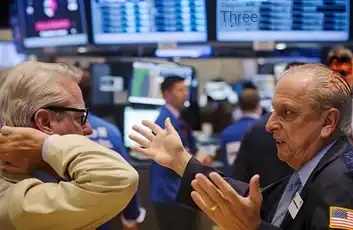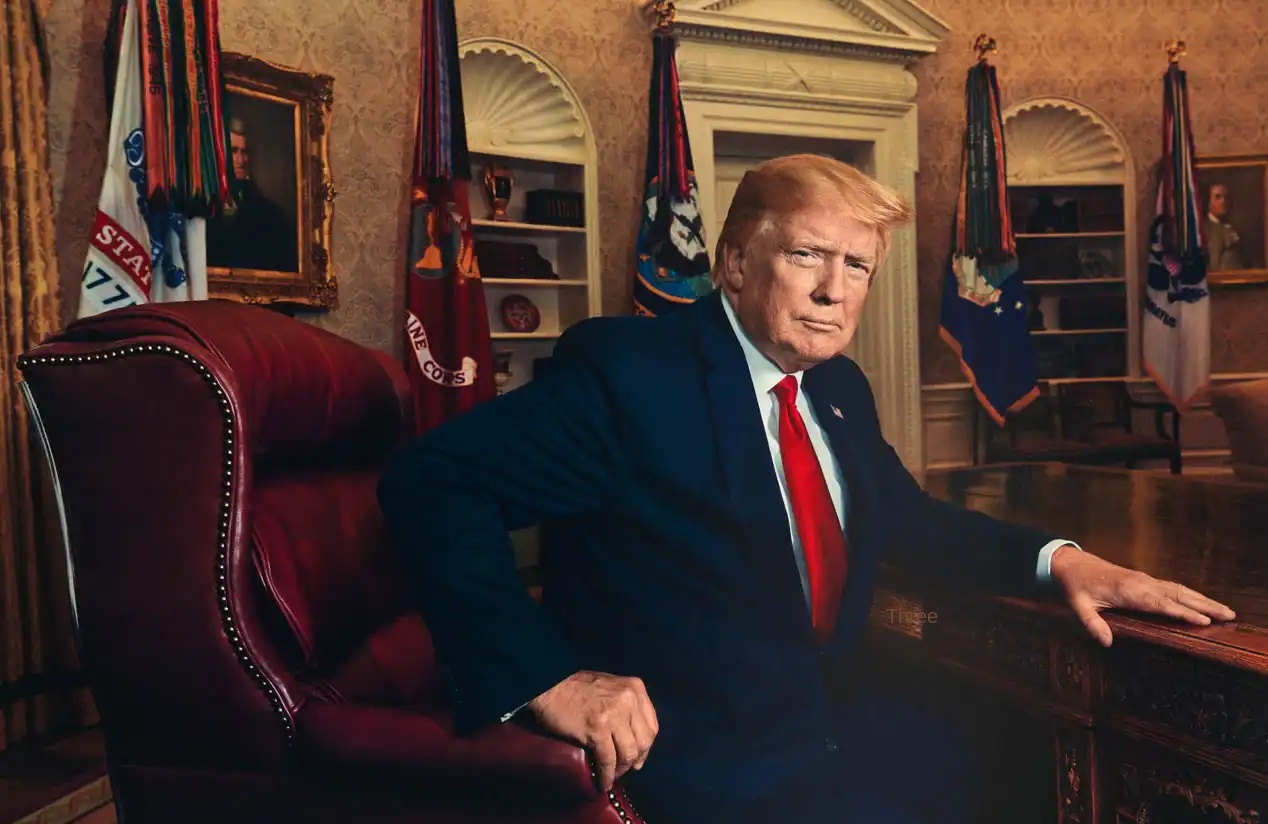Is a $9 Trillion Pension Fund Entering the Crypto Space? Trump Aims to Lift Ban on 401(k) Investment in Cryptocurrencies
Original Title: "Trump Makes a Big Move! $9 Trillion Pension Fund Set to Enter the Crypto Market"
Original Source: BitpushNews
Overnight, the UK's Financial Times revealed a major piece of news: U.S. President Trump is preparing to sign an executive order allowing retirement plans such as 401(k)s to invest in cryptocurrency, gold, and private equity, among other "alternative assets."
According to three sources familiar with the matter, the order will require regulatory agencies to review current retirement investment restrictions, clearing the way for digital assets to enter the $8.7 trillion U.S. retirement market.

This move was not without warning. On May 28, the U.S. Department of Labor revoked the Biden-era guidance on "extreme caution with regard to cryptocurrency assets," citing "regulatory overreach." As early as 2022, Republican Congressman Peter Meyer proposed the "Retirement Savings Modernization Act," attempting to include digital assets in the 1974 Employee Retirement Income Security Act (ERISA) framework. Although it did not pass, it laid the groundwork for today's policy shift.
Trump's "Digital Asset" Ambition
The core intent of this executive order is to break the tradition of the 401(k) plan's focus on stocks and bonds, giving it a more diversified asset allocation flexibility.
The order will directly instruct Washington's regulatory agencies to delve into and begin removing barriers that hinder alternative assets, especially digital assets, precious metals, and funds focused on corporate mergers, private lending, and infrastructure transactions, from being included in the existing barriers of 401(k) managed funds.
The White House cautiously stated to the Financial Times: "President Trump is committed to restoring prosperity for ordinary Americans and safeguarding their economic future. However, any decision should only be considered official policy once announced by the President himself." Nevertheless, this statement does not mask the strong signal from the Trump administration to mainstream cryptocurrency.
In fact, this move is a continuation of Trump's series of pro-crypto policies. From promising during his campaign to liberate digital currencies from what he called "excessive regulation," to his family business—the Trump Media & Technology Group—investing over $2 billion in Bitcoin and other digital currencies, and even launching its stablecoin and other digital tokens, Trump himself has become a heavyweight player in the digital asset space, with his disclosed cryptocurrency holdings exceeding $51 million.
The government has also taken action, with the Department of Labor revoking the Biden-era policy in May that discouraged 401(k) plan managers from offering cryptocurrency investment options, paving the way for this executive order.

Analysis: The Profound Significance of Opening the U.S. Retirement Market
To understand the potential impact of this policy, we need to look into the structure and scale of the U.S. retirement market. As one of the world's largest retirement systems, the U.S. retirement market has a total size of up to $9 trillion.
Specifically, according to public data, as of March 31, 2025, the total assets of all employer-sponsored defined contribution (DC) retirement plans have reached $12.2 trillion. Among them, the most prominent 401(k) plans hold $8.7 trillion.

These massive funds mainly come from tens of millions of American working-class individuals. The 401(k) plan, as an employer-sponsored occupational retirement plan, is the core of long-term savings for the vast majority of working-class families due to its wage deductions, tax benefits, and employer matching contributions.

Traditionally, these large retirement funds have mainly flowed into publicly traded securities. As of the end of March 2025, the 401(k) plans alone had $5.3 trillion (61% share) managed by mutual funds. Among them, equity funds with a size of $3.2 trillion have become the most common type, followed closely by hybrid funds (including target-date funds) managing $1.4 trillion. It is this current asset allocation status quo dominated by equity and bond mutual funds that provides ample space for Trump's push for alternative investments to "break the ice."
IRAs (Individual Retirement Accounts) provide individuals with more independent retirement savings options. These wealth accumulated by ordinary Americans month by month make up a massive amount of "long-term money" that drives U.S. economic growth and financial market stability.
Compared with the Chinese pension system, the similarity lies in both aiming to build a multi-level security system. China's "Enterprise/Occupational Pension" shares similar employer-sponsored attributes with the U.S.'s 401(k), while "Individual Pensions" are closer to the individual self-directed investment model of IRAs. Therefore, the U.S.'s move to open up pension investment options has globally significant implications for public wealth allocation concepts.
Private Equity Giants and New Opportunities: Redistributing the Trillion-Dollar Cake
In addition to cryptocurrency, this executive order represents a potential feast for the world's largest private equity groups, such as Blackstone, Apollo, and BlackRock. These giants have largely pinned their future growth hopes on managing funds from ordinary retirement savers. The executive order will require the Labor Department to consider providing a "safe harbor" mechanism for retirement plan managers to reduce the legal risks they face when offering high-fee, illiquid, and less transparently valued private investments to savers compared to publicly traded stocks.
Private equity groups predict that once successfully entering the 401(k) retirement plan market, they may attract billions of dollars in new industry assets.
To this end, they have been proactive in forging partnerships with large asset management companies: Blackstone has teamed up with Vanguard, while companies like Apollo and Partners Group are providing investment services to large 401(k) plan sponsor Empower. BlackRock has also started collaborating with retirement savings plan third-party manager Great Gray Trust.
As federal-level policies brew, some state governments have taken the lead. North Carolina lawmakers proposed a bill allowing some retirement funds to allocate up to 5% of their balance to cryptocurrency, as reported previously. Retirement systems in Michigan and Wisconsin have also made actual investments in spot Bitcoin and Ethereum ETFs, providing a reference for federal policy through these local practices.
Headwinds Remain
In terms of legislation, the U.S. House of Representatives passed three significant cryptocurrency-related bills on Thursday: the CLARITY Act, the GENIUS Act, and the Anti-CBDC Monitoring Act. Among them, the CLARITY Act and the Anti-CBDC Monitoring Act will be sent for Senate consideration. The GENIUS Act is expected to be signed into law by President Trump on Friday, marking a substantive step forward by Congress in advancing cryptocurrency legislation and providing a clearer legal framework for industry development.
However, despite the positive news on the legislative front, the market still faces challenges. Manan Dave, Co-founder of Palisade, warned that if the U.S. fails to establish a clear and consistent regulatory framework, companies may redirect funds and innovation to markets with clearer rules. Additionally, allocating retirement savings to illiquid private assets is not without risk. The inherent high fees, higher overall leverage, and lower fund asset valuation transparency are factors that regulators and investors need to carefully consider.
When Trump's executive order meets the $90 trillion retirement market, this experiment may redefine the meaning of "retirement savings" — is it to allow ordinary people to share in the tech windfall in the digital age? Or is it to expose retirement savings to new risks? The answer may depend on how regulators find a balance between innovation and protection.
Welcome to join the official BlockBeats community:
Telegram Subscription Group: https://t.me/theblockbeats
Telegram Discussion Group: https://t.me/BlockBeats_App
Official Twitter Account: https://twitter.com/BlockBeatsAsia
 Forum
Forum OPRR
OPRR Finance
Finance
 Specials
Specials
 On-chain Eco
On-chain Eco
 Entry
Entry
 Podcasts
Podcasts
 Activities
Activities









